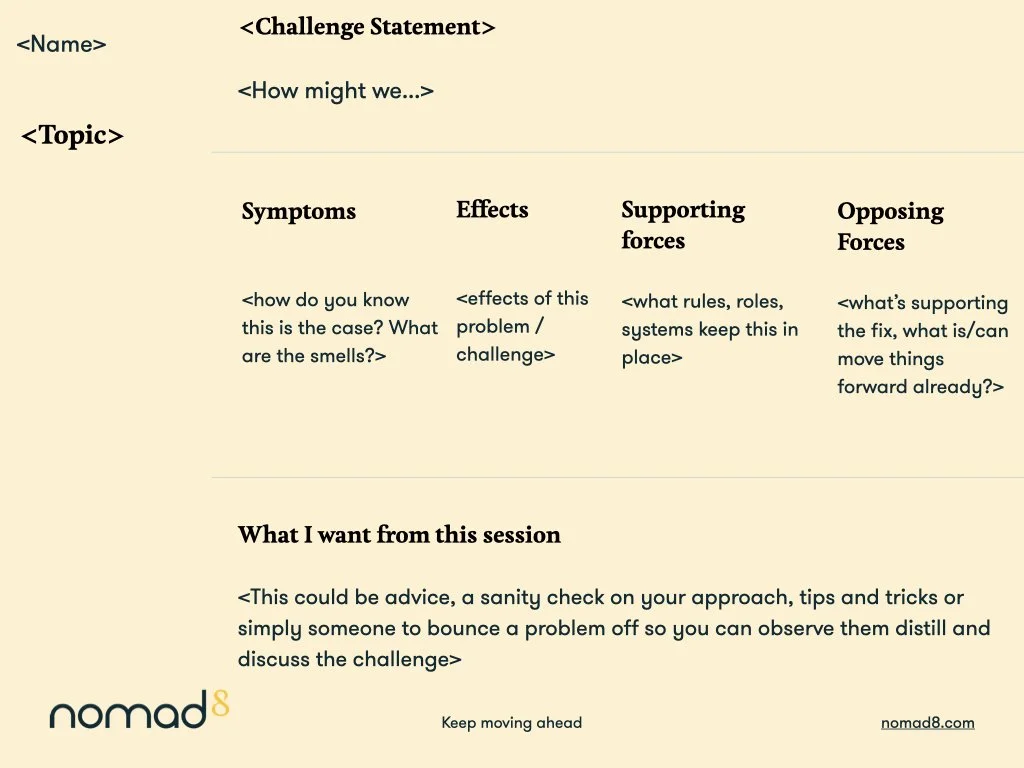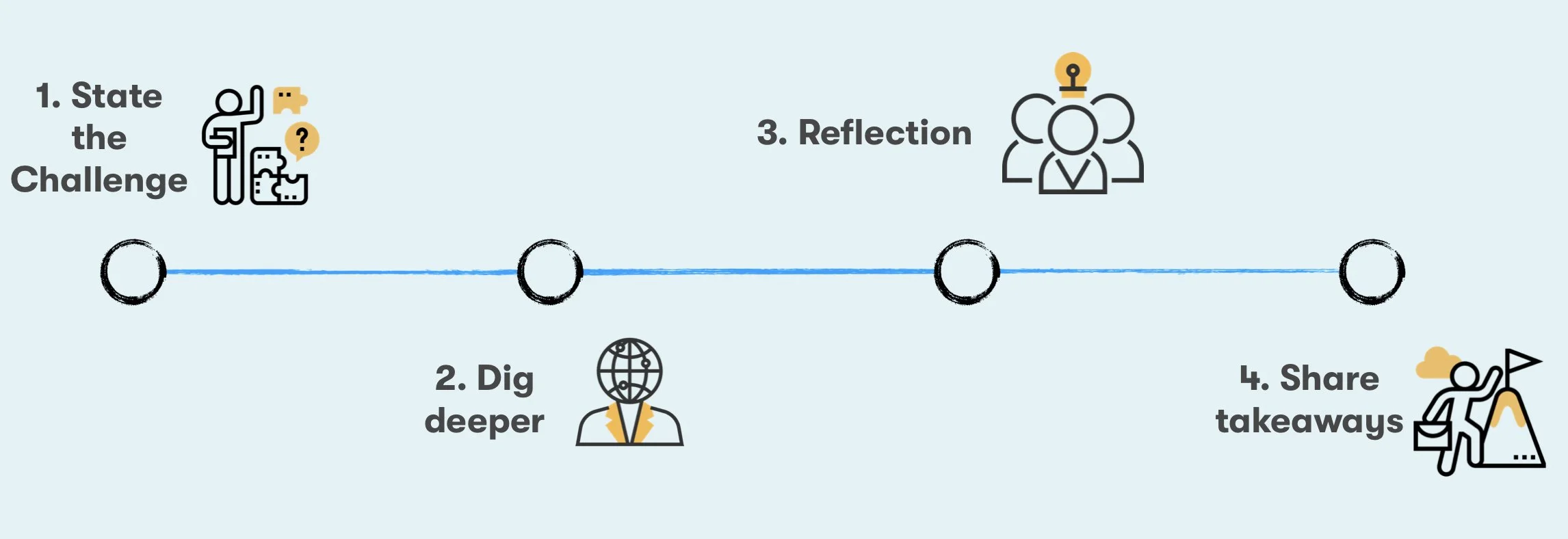How to run a Coaching Reflection Session
How do you deal with your “is this completely bananas or ...” moments at work?
How do you get feedback on your approach and interventions?
How do you bounce around ideas among peers?
Being in a leadership (coaches, scrum masters, product leaders, people leaders) role can be a lonely place. Often, you can end up supporting others from a vacuum without support for yourself. You do your best, but lack the heads-up time to validate your approaches or solutions and see the bigger picture.
This problem isn’t specific to coaches, and neither is the solution.
Enter Coaching Reflection sessions…
These sessions entail discussing a challenge in a prescribed format while the rest of the group listens, asks questions, then discusses the challenge in the frame of the coach’s goals, offering advice and feedback only if explicitly requested.
Preparing for the session
In the week leading up to the session, the Presenter (the person bringing the challenge to the group) thinks through and specifies what they want to discuss, and what they want to get out of the session.
We have developed a very specific format that enables you to frame exactly what you want to discuss, and gives the Reflectors (the rest of the group) the context they need for the session. A Facilitator for the session provides the structure and support for the format.
How it works...
Each session is broken down into several stages, each with its own purpose and expectations for each role. They were inspired by a few different things, namely:
Troika consulting from Liberating Structures
and Reflection Teams, a structure that professional therapists use to support each other (but with all the therapy stripped out because coaching and therapy are two very different things)
Download the full facilitation guide at the bottom of the article.
1. State the challenge
Here, we learn some context from the Presenter. What is their biggest challenge right now? What are the stressors? Where are the bright spots? What have they tried already?
Importantly, what do they want from the group? Is it advice? Is it just a sounding board? Do they want to hear the group describe back what they’ve heard, but through their own perspectives?
2. Dig deeper
This is a two way conversation where the reflectors can get even more context and ask some questions. This is not about solving anything, or needing to defend what you’ve done already, but rather a chance for the reflectors to get more information.
Beware the advice couched as a question e.g “have you tried ___ yet”
3. Reflection
This is the section where only the Reflectors can speak. In-person ask the presenter to turn their back. In virtual settings, they should turn off their camera and mute themselves.
Here’s where the reflectors discuss what they’ve heard and seen and if requested join the dots with their own experience and knowledge and offer some advice.
4. Share takeaways
Finally, the Presenter rejoins the group and shares what they’re going to do, change or have learned from the session.
—
How we use it
At Xero, the team of delivery coaches were in exactly the position described at the top of the article. Everyone was supporting a diverse array of parts of the business, including multiple teams and leadership groups. But we found we weren’t supporting each other as much as we wanted. We weren’t getting the robust and diverse input into our work and approach that helps us learn and improve.
Now, every fortnight, we meet as a group to share challenges and help each other. Half of the group brings a challenge they are currently encountering. These can be anything from large-scale organisational change challenges to tactical issues involving a single team or session. The other half act as Reflectors, and everyone gets the opportunity to bring a challenge to the group.
This has dramatically improved the ability to support each other, understand what the rest of the team is doing and share perspectives and experience.
What’s holding you back, give it a try!




